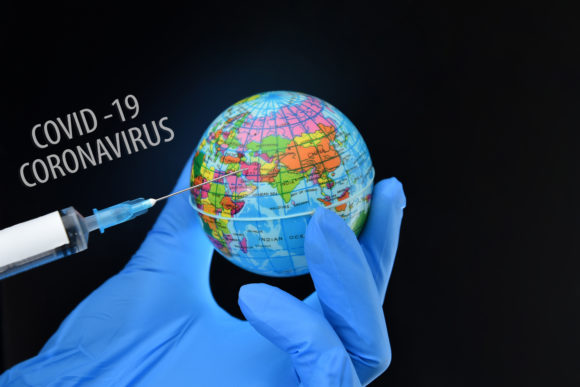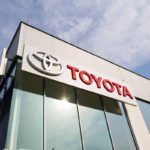As COVID-19 vaccine distribution rolls out across the country, insurers of the pharmaceutical industry are in a position to share their experience as to what constitutes a successful and safe distribution process.
Allianz Global Corporate & Specialty (AGCS) is one insurer with such experience working with clients to ensure the safe transit of sensitive pharmaceuticals. Insurance Journal’s Andy Simpson turned to AGCS to provide an understanding of the logistics, risks and insurance related to vaccine transport. In the following question-and-answer segment, Damon Finneran, Senior Allianz Marine Risk Consultant, and Brian McClintock, Pharma Global Practice Leader and Cargo AGCS, address the distribution process, some of the inherent risks, what commercial insurance covers, how the CIOVID-19 vaccine distribution differs from other pharmaceutical distributions and what the pharmaceutical insurance renewal market might look like.
What types of businesses are your insureds that are involved in the vaccine project?
Allianz Global Corporate & Specialty has a number of assureds in the pharmaceutical industry ranging from the manufacture to the distribution of vaccines globally.
What constitutes a successful vaccine distribution process? What are the specifics pertaining to the logistics and supply chain process of the vaccine distribution? What entities and people are involved? When does your clients’ responsibility begin and when does it end?
A successful vaccine distribution process in our mind starts with the transportation of the raw materials — Active Pharmaceutical Ingredients (API) — that make up the vaccine all the way to the point of injection into the individual receiving the dose of the vaccine. Our goal as an insurer of this cold chain from start to finish is to have no loss of product as a result of temperature deviations, security breaches or simply physical damage during transit.
The logistics and supply chain process of a vaccine are substantial. This can involve multiple methods of transit and storage ranging from specialty integrated transport providers that move ultra-cold product that can be fragile during transit and requiring a narrow temperature range that it ships within before it begins to degrade the potency of the vaccine.
Additional methods of transit will include trucking in conjunction with air, and with more stable vaccines, also by ocean. All methods of transit and packaging of vaccines need to be validated by a governmental body, (i.e. the Food and Drug Administration here in the states) to preserve the cold chain from origin to destination. This is done by the use of multiple transport and packing methods inclusive of envirotainers, temperate controlled trucks and containers and specialty packaging containing dry ice or cold packs depending on the temperature range the vaccine is required to ship within.
The point in time our assureds responsibility begins and ends depends on the circumstances. Most pharmaceutical manufacturers have the risk of loss from raw materials to the delivery of finished vaccine to a distributor. The distributor then takes the risk of loss through the last mile distribution to the vaccination site. As we have learned with the Covid environment, circumstances can change quickly. As an example, the public/private partnership with the Covid vaccine has significantly changed the norm when it comes to who and when has the risk of loss.
What are some of the inherent dangers of vaccine transport and how do insurers work with their clients to mitigate these risks?
The primary concerns with the transport of vaccines are excursions (temperature deviations) during transit. Our global loss prevention team works with our assureds to minimize any excursions during transit. We have tabletop discussions identifying contingency plans if things do not go as planned during transit. Our loss prevention team makes themselves available any time to work with our assured and brokers to “save” shipments that may become out of their temperature specification while delayed in transit.
How does the Covid-19 vaccine distribution differ from other pharmaceutical distributions? What are some of the unique risks for insurers and clients due to the massive size and scope of this project?
We are involved with ultra-cold, 2-8 degree C and ambient shipments on a regular basis, the current Covid-19 shipments challenge us with their volume in conjunction with the strain the movement of the vaccines will put on the temperature controlled transportation industry through to last mile distribution.
There are the usual requirements surrounding storage, safety, security, timeliness, scheduling of the vaccines that we are accustomed to managing, the short term volume creates some concern with not just the movement of the vaccine but all of the other temperature controlled goods in transit, i.e. Covid test kits to bulk reagents, during this Covid time.
What does commercial insurance cover during this process and what does it not cover? How long is the rollout expected to continue in huge volume? How might insurance renewals be affected? Insurance can’t cover everything—what are some common exclusions or areas typically not covered (cyber)?
A standard marine cargo policy covers all risk of physical loss or damage from any external cause while the goods and/or merchandise are in the ordinary course of transit.
It is unknown how long the rollout it expected to continue in huge volume
We expect pharmaceutical type business/accounts renewals to be challenging in 2021. The marine cargo market is expected to continue to push for rate/premium increases and/or increased retentions and/or reduction in terms in the overall market but would expect that pharmaceutical and/or temperature sensitive type goods to be under greater scrutiny.
The standard cargo policy contains both Implied and Expressed warranties in the policy however some standard exclusions would be Delay, Loss of Market, Inherent Vice, Misappropriation and over the past year some companies have been adding in a Cyber Exclusion Endorsement as well as a Communicable Disease Exclusion clause.
A number of years ago when the market was very soft brokers started including the peril of delay (deterioration) back into the policy as a covered peril and in this current environment insurance carriers are now looking to either exclude delay again and/or provide some type of sub limit and annual aggregate.
Have clients sought additional coverage for this global rollout of the vaccine compared to normal distribution? Has the extra coverage been available?
Most of the global pharmaceutical clients and/or the global logistics providers and/or global medical distributors already have sufficient coverage in place within their programs. However, as more companies come online with an alternative vaccine and/or more companies are involved with the distribution then we would expect that assureds may look to procure additional limits and/or coverage due to the vaccine rollout.
What is the single biggest challenge of this distribution from an insurance perspective?
The biggest challenge is supply chain disruptions and/or lack of available power units/trailers/aircraft to move this volume in a world that is right now not operating at 100% capacity.
Was this article valuable?
Here are more articles you may enjoy.



 Father of Tesla Cybertruck Crash Victim Files Lawsuit Over Death
Father of Tesla Cybertruck Crash Victim Files Lawsuit Over Death  Delta Plane Catches Fire at Orlando Airport in Latest Incident for Airline
Delta Plane Catches Fire at Orlando Airport in Latest Incident for Airline  Class Action Accuses Toyota of Illegally Sharing Drivers’ Data With Progressive
Class Action Accuses Toyota of Illegally Sharing Drivers’ Data With Progressive  Don’t Forget Tariff Impacts on Workers’ Compensation: Berkley
Don’t Forget Tariff Impacts on Workers’ Compensation: Berkley 



